Around the World in Eight Days
by Ancil Nance
(Click image to enlarge.)
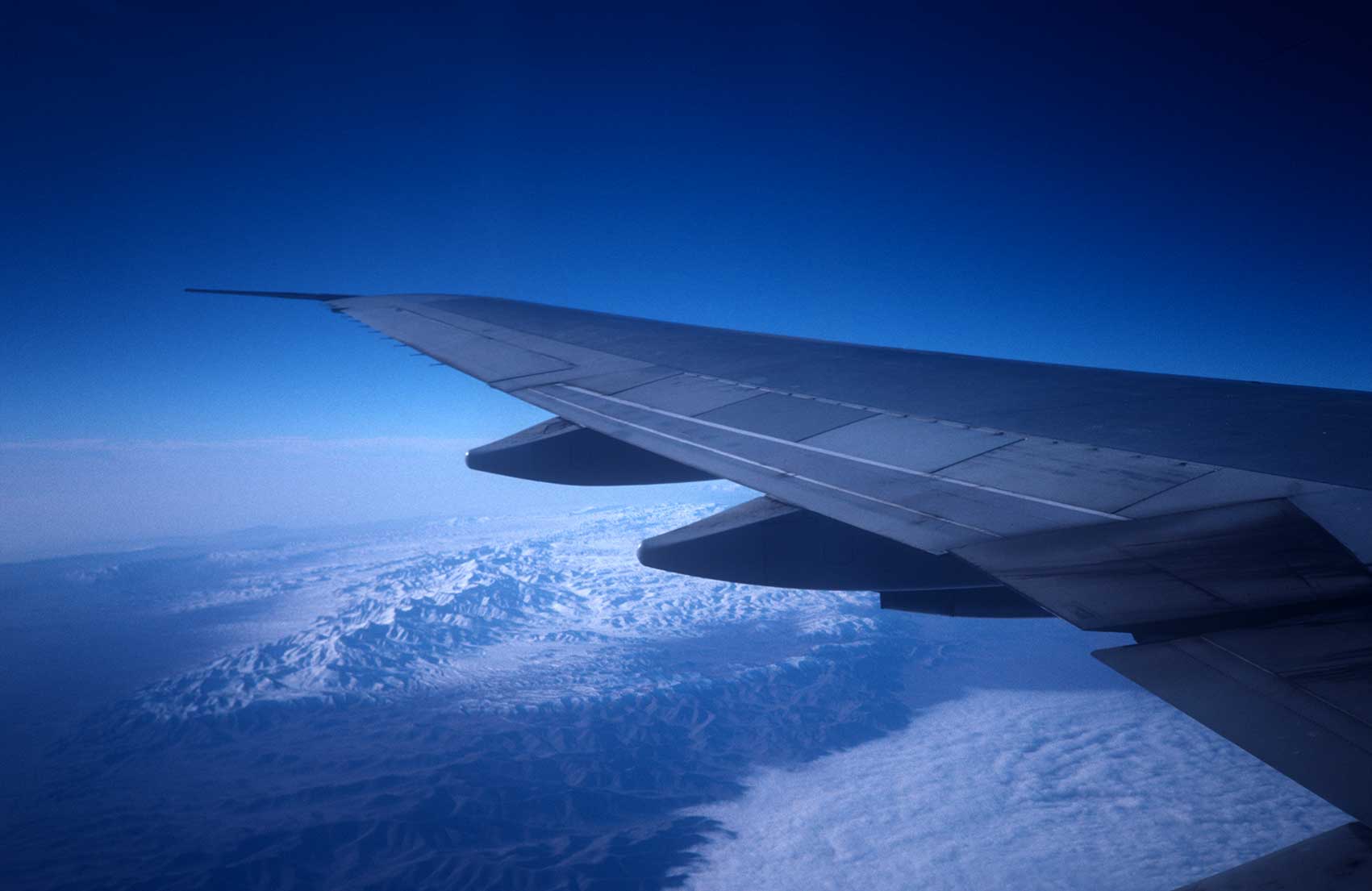
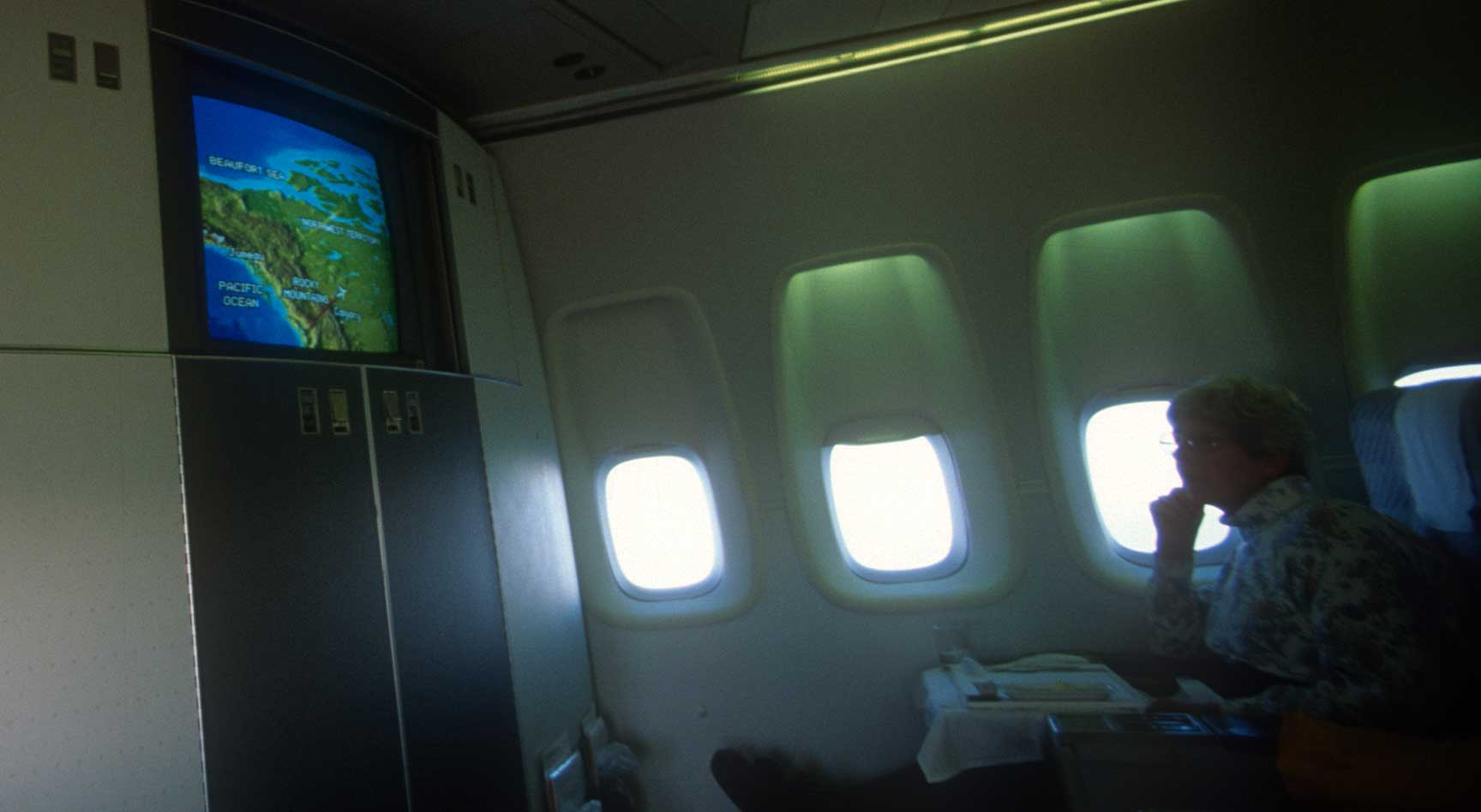
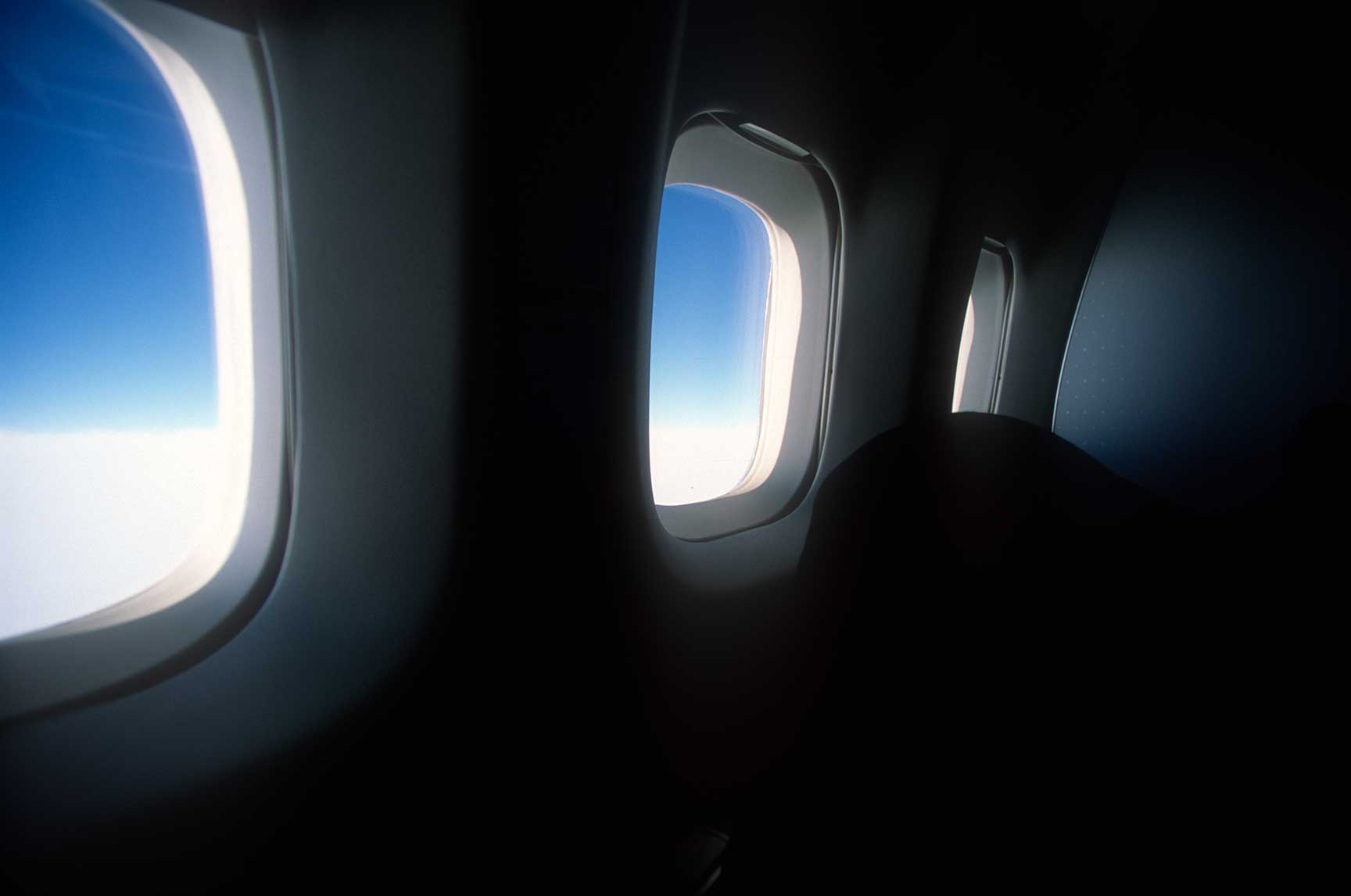
The idea of going around the world is probably more fun than actually doing it, in a way. It is easy to visualize a tiny plane flying eastward around a blue and white orb, taking to the air over Portland, setting down in Frankfurt, Bangkok, Hong Kong, and returning to Portland. When I was in the 747 it was just like being in a plane going anywhere, 36,000 feet up, 670 miles per hour, but no sense of motion. The on-screen flight monitor at the front of the cabin indicated that it was -72F outside.
Not that I had to worry about being out there, but it was interesting information. The small airplane icon moving across the on-screen map made adjustments every 20 minutes and twitched around a bit too much for my liking. I felt like fastening my seat belt. That is recommended now anyway, due to recent head thumpings some passengers have experienced on other flights. I wonder if any airline showed the movie Fearless with Jeff Bridges surviving a plane wreck, or the more recent US Marshals with Snipes and Jones? Do people think about crashing when they go flying? I know I do. I like to check out the simple art work on the emergency procedures card that is in the "pocket in front of you." It shows how to bend forward, protecting your head. I would think that they would remind everyone to get out their small point and shoot cameras, ready to document the coming events. A video or two, were they to survive, would really be useful, I would think. Why doesn’t the plane have a video camera going all the time anyway, like a mini-mart. What’s more important, a robbery or a plane crash? Anyway, I always have my camera ready. It would be fun to survive a crash, with photos of the chaos.
On the way from Seattle to Frankfurt the route was just east of the North Pole, going over a large mass of ice and snow covered earth. Somewhere between Baffin Island and Greenland there was an expanse of moonlit ice. In the moonlight the land cast long pointed shadows, looking like economic graphs. Cutting across the earth was a straight dark line that seemed to mark our progress. It was the moonlight shadow of the jet’s contrail. In the night, over Greenland, the lights from the habitations were sprinkled in patterns shaped like weights on a barbell. (Link to NASA image) The contrail shadow slipped over the lights and the land like a giant arrow.
The sun was well into the sky by the time we were headed southeast toward Germany. I looked down on Scotland, seeing the cluster that was Edinburgh, the lochs and the coastline. Clouds then obscured most of the land until the plane slid low over the countryside around Frankfurt. I was headed for Herzognaunauch, the place Adi Dassler and his brother set up sport shoe companies years ago. Herzog, for short, is a short drive from Nürnburg, south of Frankfurt, but not as far as Munich. I was in the heart of Germany, the Frankish part. Rolling hills, old nunneries, farms, near Nürnburg, you can see on a map where I was, and more importantly, feel where I was. World War II left its mark on the land and the people. When I think of Nürnburg, I think of a Hollywood movie and trials of war criminals. People who live there think of bombs raining down from American and British planes. "The place was leveled" says one army vet who was there just after the war ended.
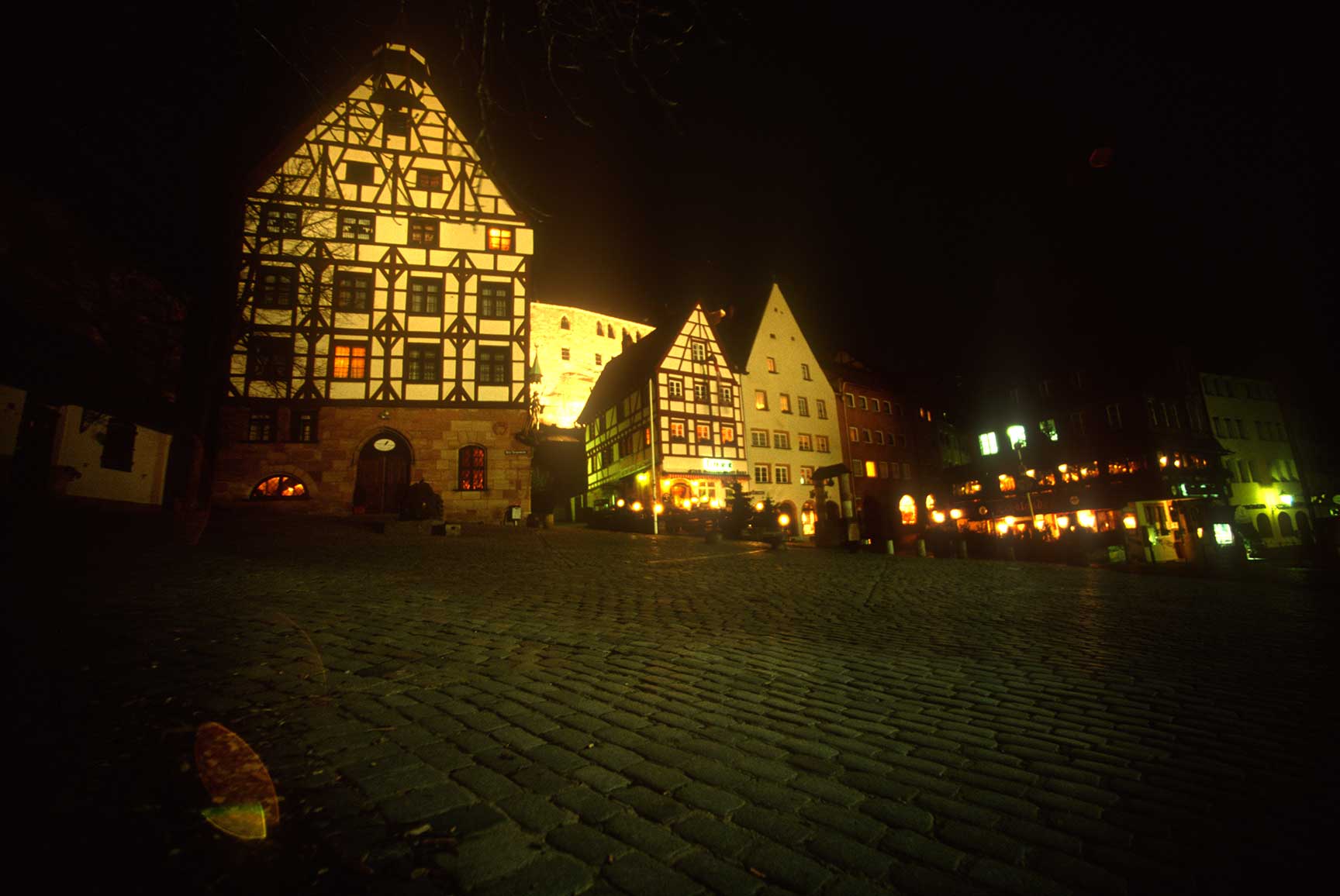

After photographing the adidas personnel in the office and test facilities I had time at night to go into Nürnburg, accompanied by adidas public relations assistant, Angela, and her boyfriend. It was a night to remember because of all it evoked. This was a rebuilt city, and new buildings could be seen that were built to match the few that had not fallen: a massive cathedral, a castle, cobblestone streets leading to plazas that were closed to cars. It all hit me that night, like walking into the past sprinkled with artifacts of today. The castle looked like a tough one to get into, with many places to wait after entering. It was not Kafka’s castle, but was impressive anyway. Standing there, fifty years later, it was easy to wonder how Americans could have bombed such a place.
We stopped at a cafe to eat and I felt like throwing a bomb to clear the place out. The air was unbreathable. Everyone was smoking. Have they not a clue? I wondered. My gracious hosts, who also did not smoke, explained that was the case with all cafes likely to be open late at night. Angela’s boyfriend claimed to be a militant anti-smoker, but he was clearly outmatched.
Let’s play stereotype. Germans I have met have been healthy outdoor types, and I can’t shake the old war-movie scenes showing masses of blond hunks marching about in brown uniforms. OK, so I had it all wrong. Instead, it is middle aged overweight folks sitting around eating something, it doesn’t matter what, it is so smoky. Even that is wrong, because the next cafe we enter is not very smoky at all, with good ventilation. It’s billed as a coffee house, and it has stuff to eat, and the people look like they are less weighty, younger, maybe even participants in the "fitness" programs that seem to abound in Germany. Living in Oregon I am spoiled with so many clean air places to eat. OK, another stereotype, the ultra-clean German. Probably true except for the lungs. The city streets were clean, even late in the day, someone was paying attention. Scattered groups of street kids each with their unique hair styles and chained leather coats looked just like the ones hanging around Portland. I had my camera with me but took no photos of the people. It would have been too obnoxious to have a flash going off in people’s faces. After we ate a light meal Angela and her friend dropped me at the hotel, where I got a good rest for the next day.
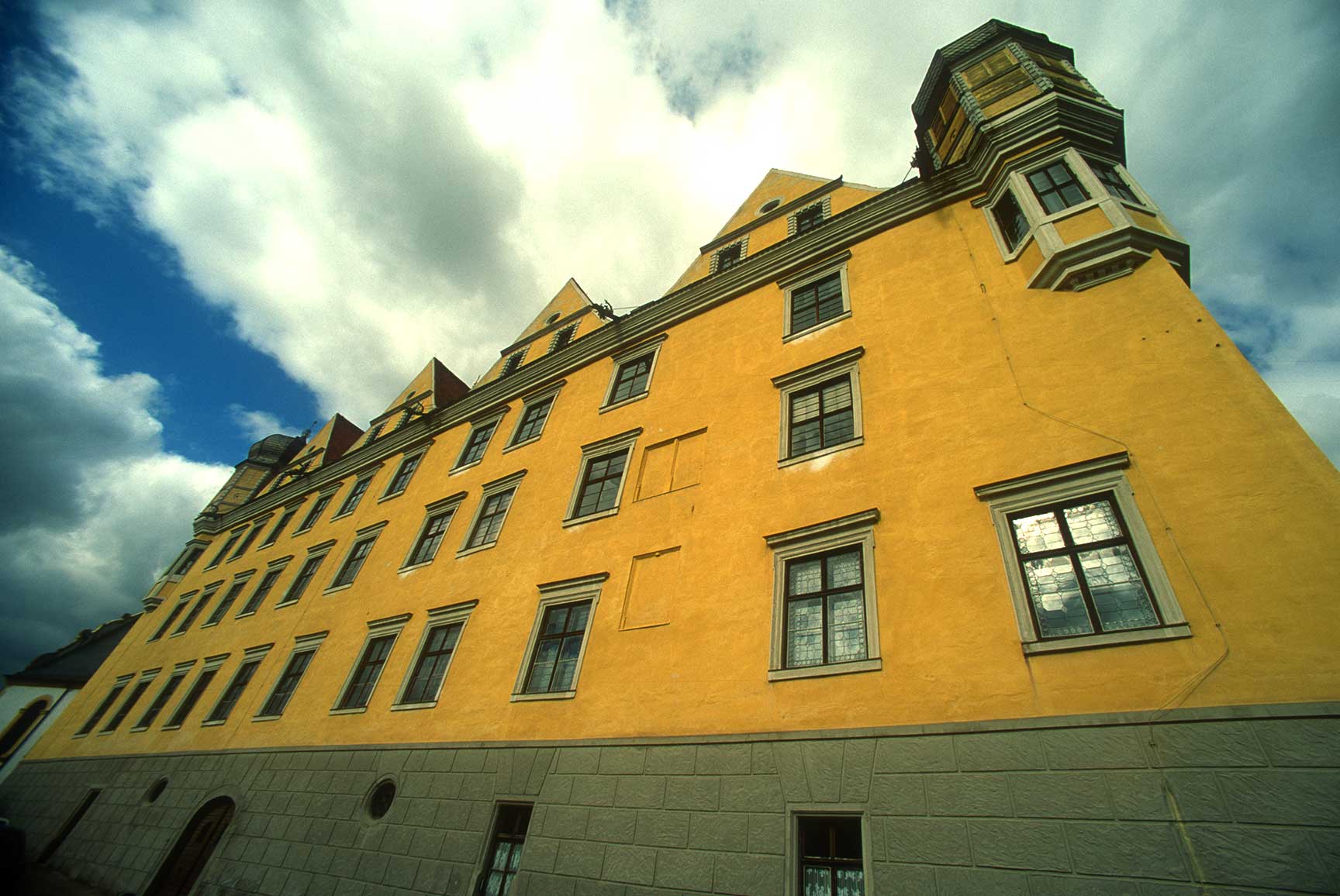
The photographs I took on this trip were used in a book aimed at adidas employees, sort of a look at the people behind the athletes. I went to every office and nook and cranny in the buildings in Herzognaunauch, photographing anyone who didn’t say no by ducking or some other protest. On the second day we went to a smaller town where adidas had a test facility for soccer balls and shoes. It was very secret feeling and I felt like a spy, going from room to room blasting away with my Canons. Some rooms were locked and the people inside would let us in after they recognized Angela as my guide. Everyone, from the time I started in Portland and Beaverton, to the time I got to Hong Kong, was alerted to my coming via the e-mail system. Often people would nod, saying they had just read the message that I would be around. Then they either smiled or ducked.
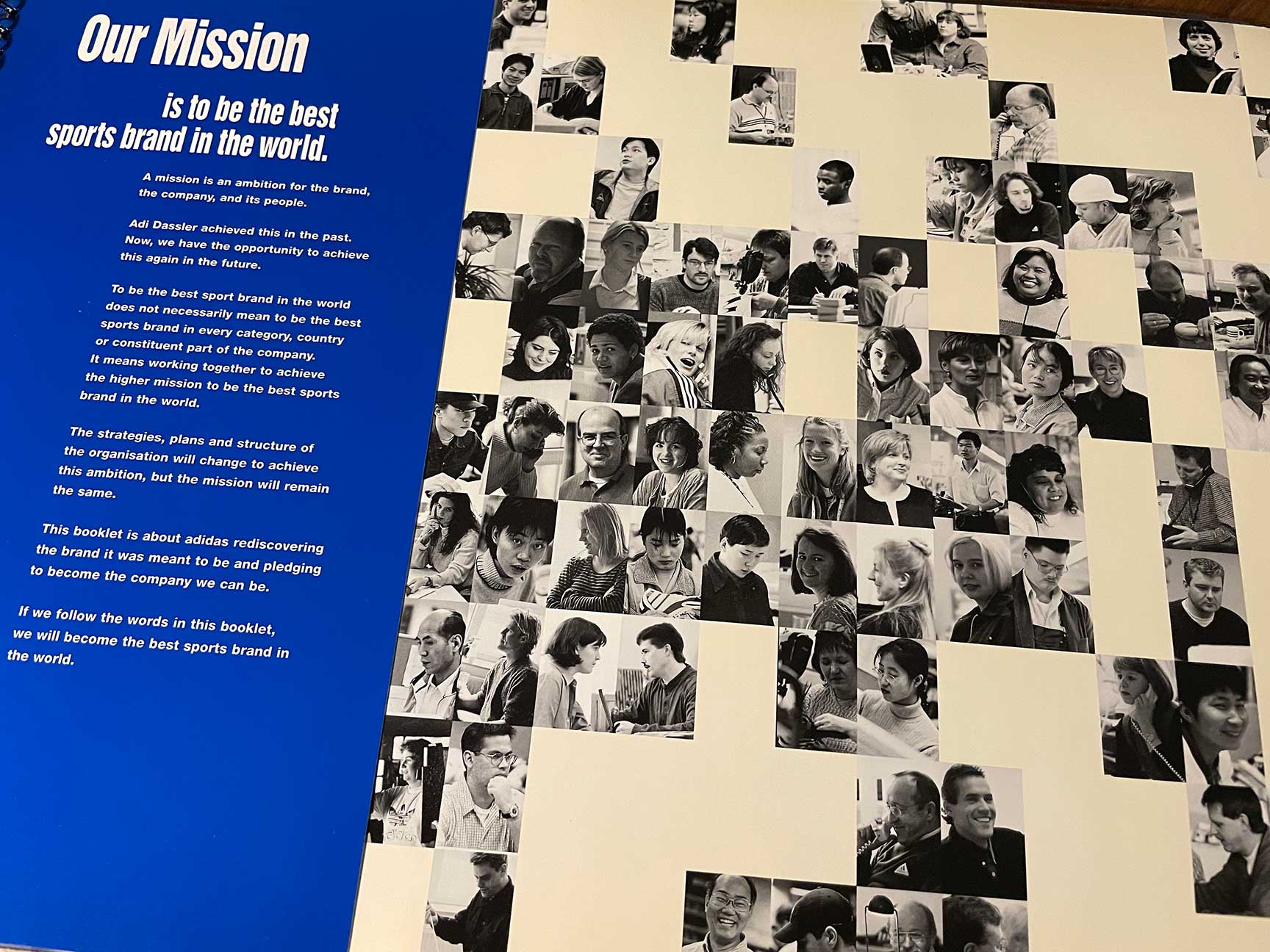
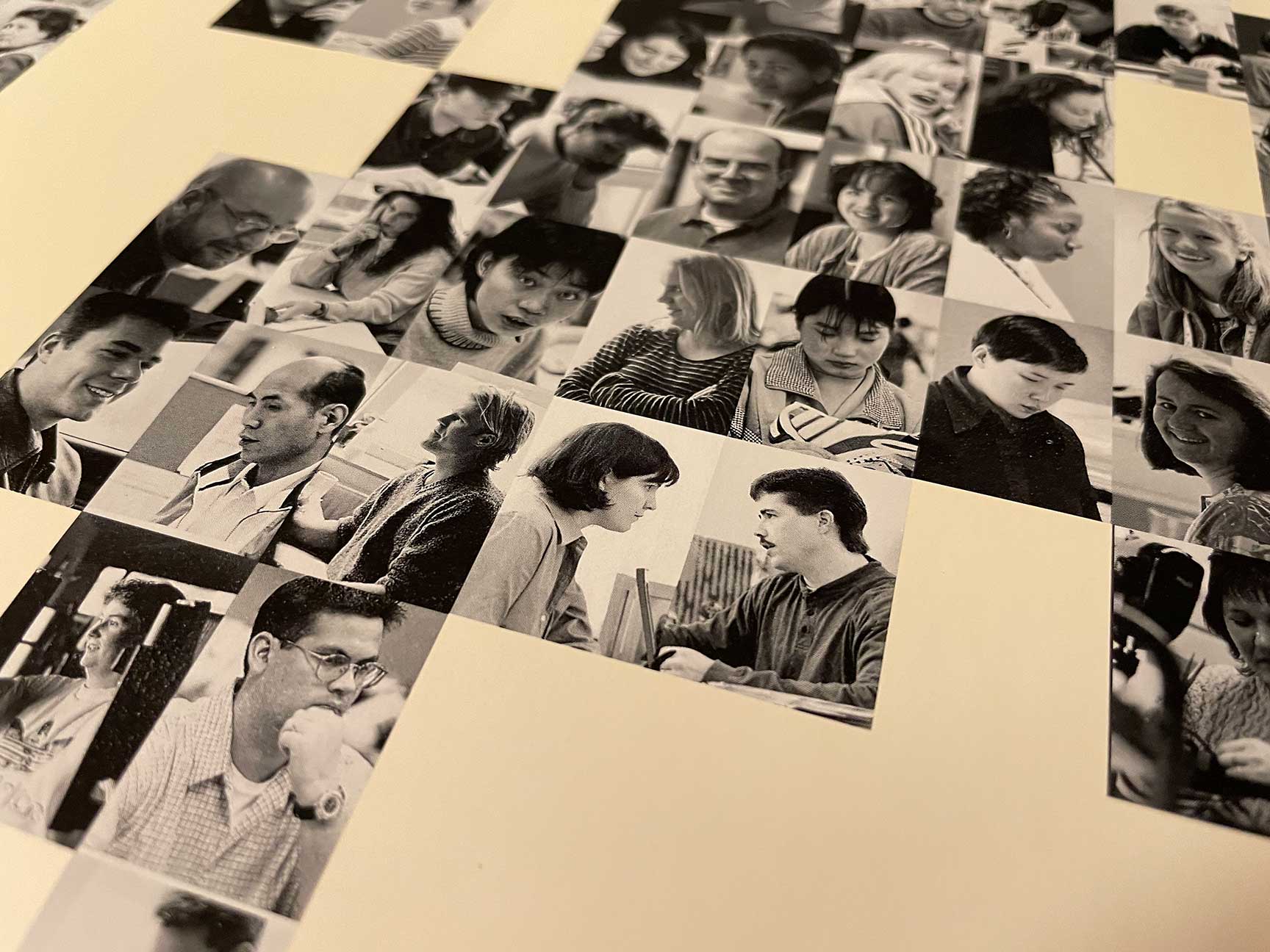
I used Kodak T-Max 400CN film for all the photographs which, upon returning, I had processed quickly into 4x6 prints. This made it possible for Art Director, Peter Moore, to choose a black and white print and have it scanned directly without going back to the negative. We didn’t have to keep track of negative numbers and faces that way. The images were reduced to about one and an eighth inch by three quarters of an inch, smaller than the negative image, and then after selection, were laid out in a random way across the report pages. The film did a good job of holding detail so that the prints, even after reduction and printing, showed images with a great range of tones. I shot about 40 rolls, most times only clicking one shot per person. 385 images were used in the report.
Some photos I took required me to make a noise or ask the person to take a look toward me. Others presented themselves as studies of people at work, computing, phoning, sewing, and so forth, without the person being aware that a photo had been taken until after the camera click sounded. This gave a good range of expressions, smiles, and attitudes. I used two lenses, mostly, a 300mm and an 85mm.
After Germany I took a plane to Bangkok, transferred, and flew on to Hong Kong. The new airport was not open, so I had the thrill of landing at Kai Tak, skimming almost at street level along the tops of low apartment houses and factories on the edge of the airport. Hong Kong is jammed with people and the area is small. It doesn’t take much of a bus or taxi ride to get across town. I grabbed an A1 bus that took me to within a block of the Hong Kong Renaissance Hotel where I stayed for one night before going on to Guangzhou. I have been to Hong Kong before, was born there in 1941, in fact, and have returned to visit three times. I feel right at home on the crowded sidewalks looking at the stores crammed with cameras, watches, video cameras, and everything else under the sun. The Hong Kong adidas office was only a couple of blocks from the hotel. After photographing the staff I wandered toward the Star Ferry system, whose ancient crafts have carried passengers between Hong Kong and Kowloon for more than 50 years. The green and white paint on the ferry is so thick from the many coats that it must add at least a ton to the boat’s weight.
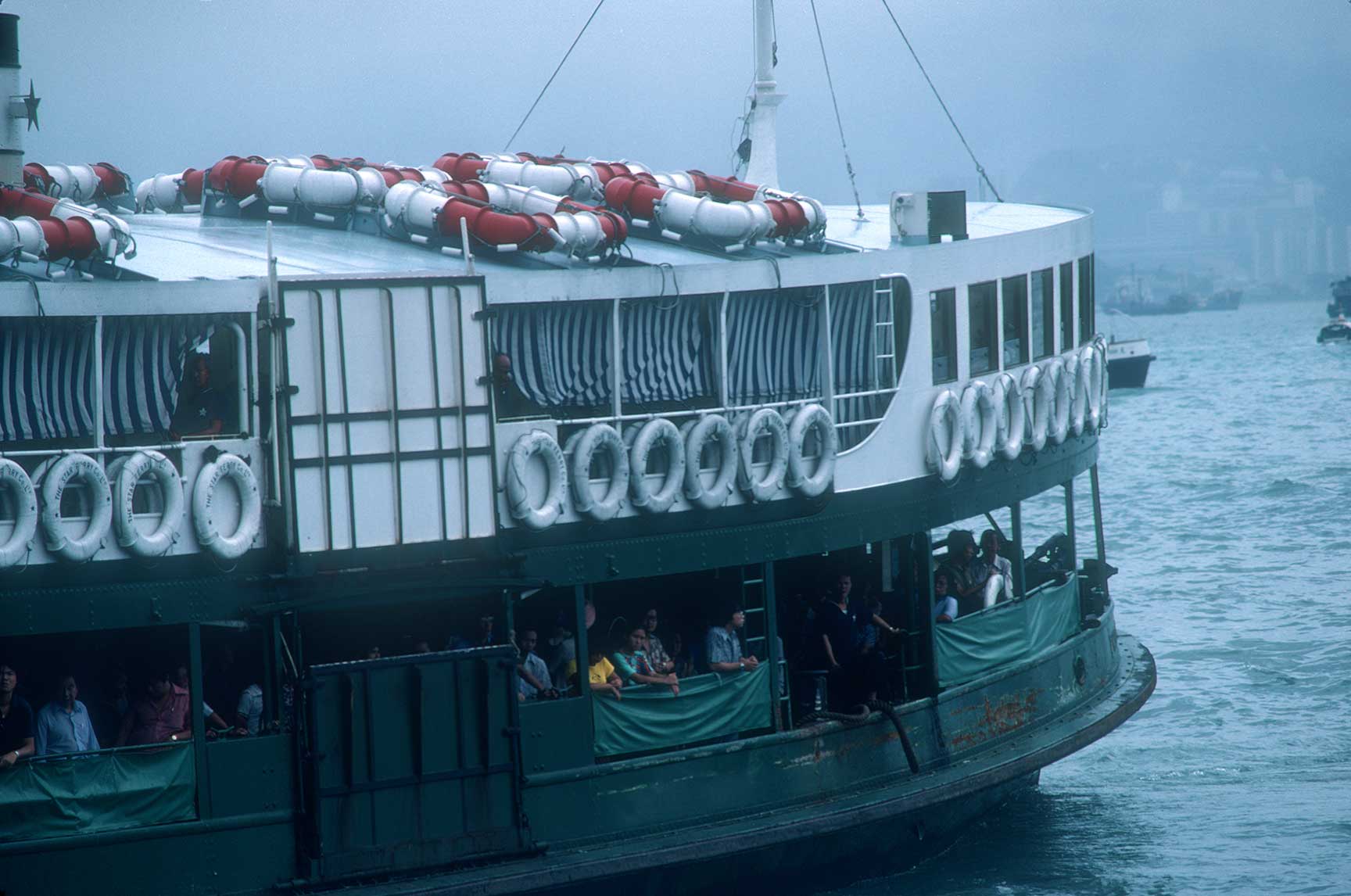
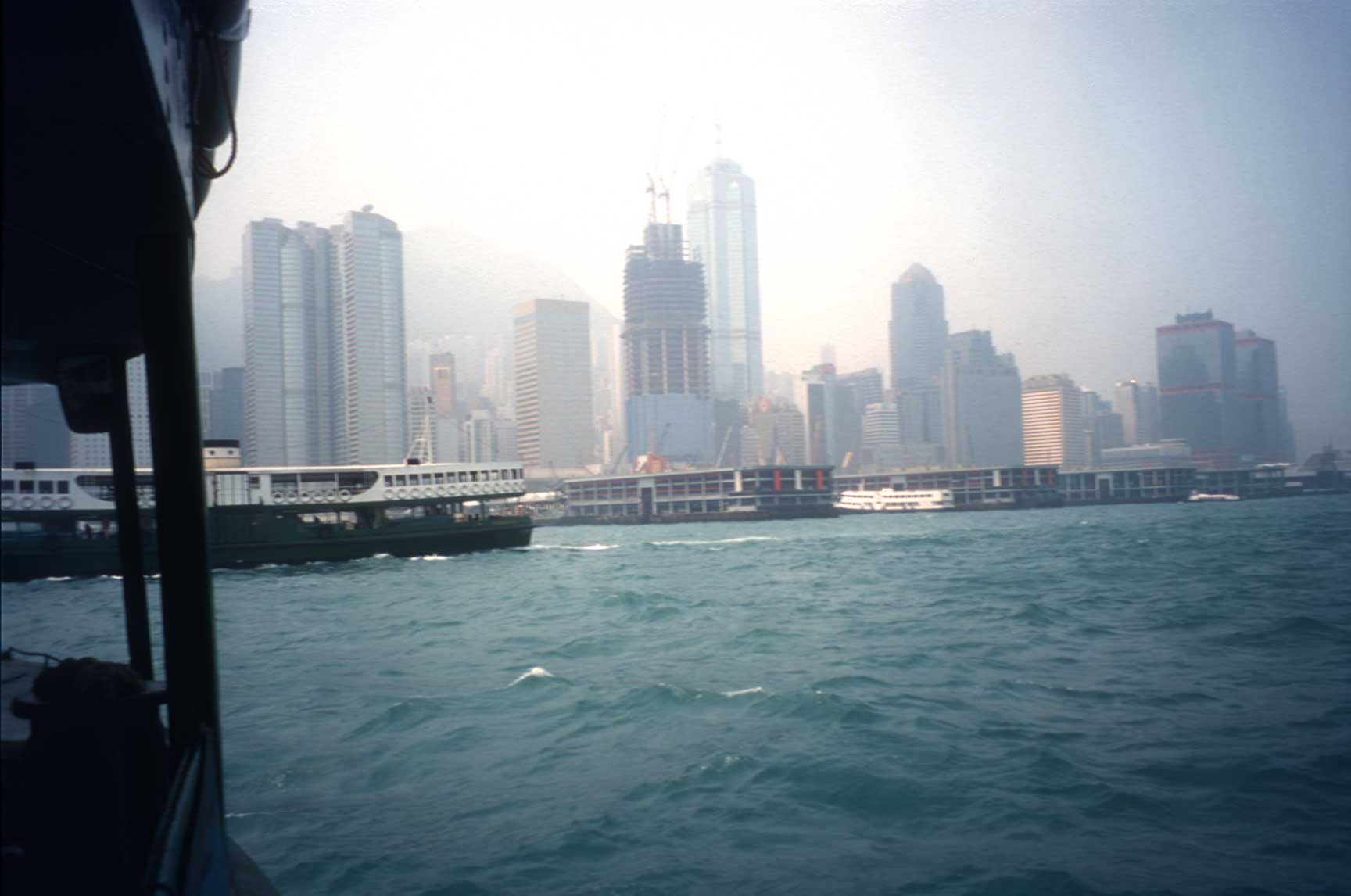
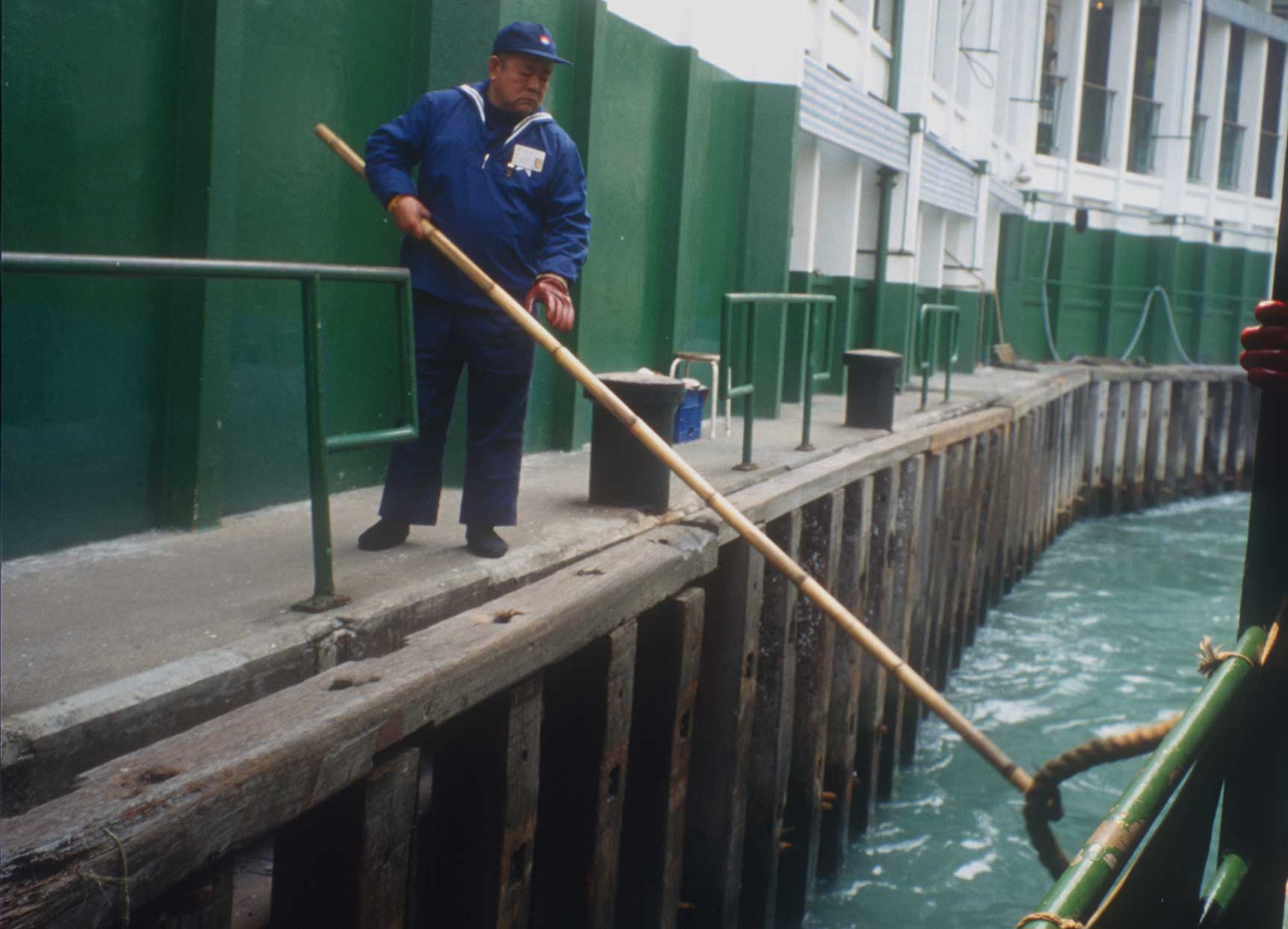
A haze covered the harbor and obscured the view of Hong Kong’s skyline, with Victoria Peak rising almost two thousand feet above the waters. A tram hauls passengers to the top of the island, and as tourists get off the ferry they are offered a ride in a rickshaw, the ancient two-wheeled chair pulled by a just-as-ancient rickshaw owner. I didn’t see anyone taking advantage of this service which could save 15 blocks of walking to the tram terminal. When I was in Hong Kong in 1976, my mother and I made the mistake taking rickshaw rides to the tram terminal, for old time’s sake, and felt very embarrassed by the whole experience, having an old man pull us up hill. I suppose he didn’t mind, just a job to him, which used to be a better living before taxis took over the task of whisking people about.
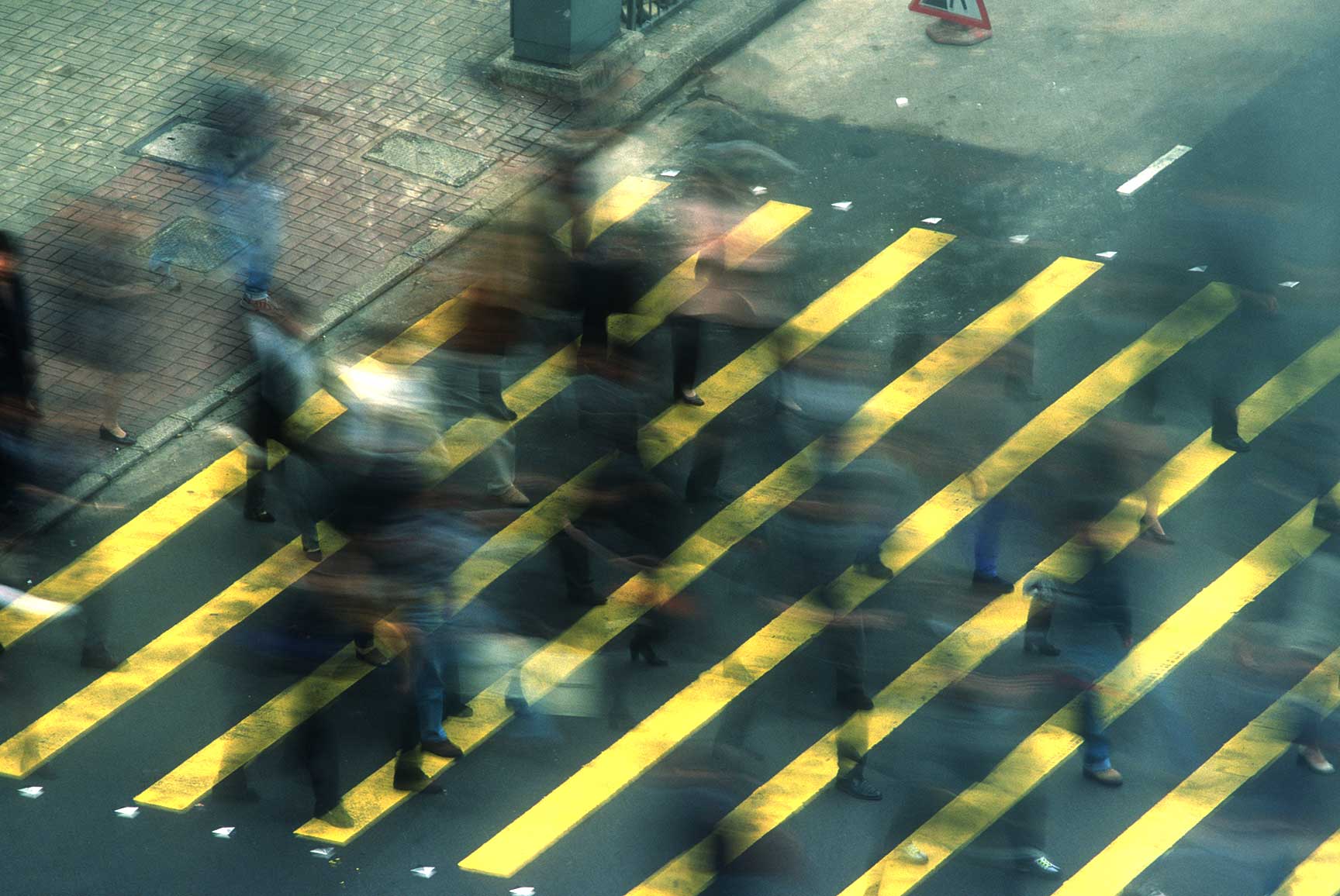
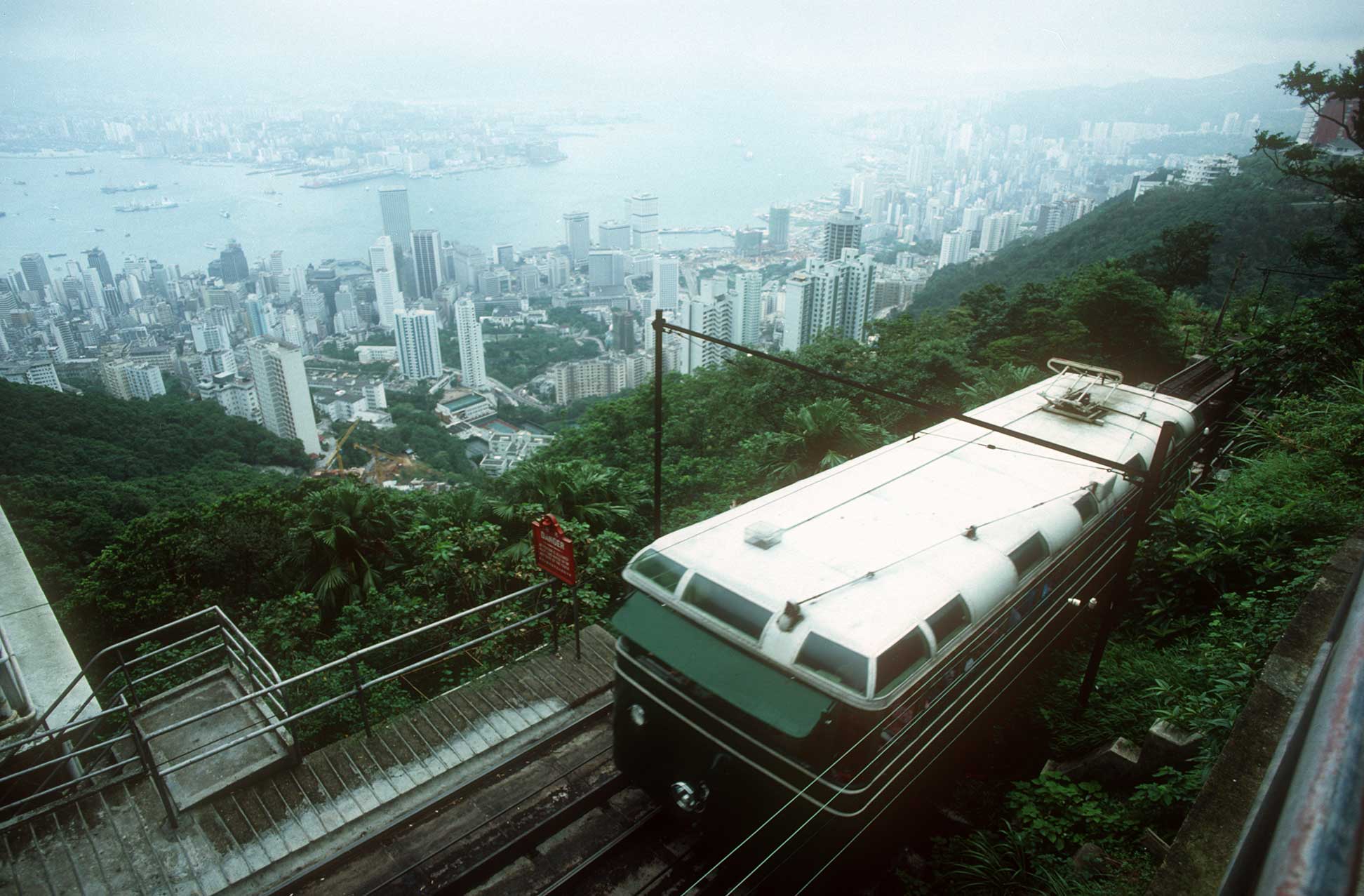
I walked to the tram, found that the cars had been upgraded and new buildings housed shops and ticket takers at either end. The view from the top was very hazy, I didn’t even try for a scenic photo. The ride up and down the peak allows glimpses of new and old construction. Fifty-story apartments are being built on every last scrap of land, no matter how steep. A small flat costs about US$300,000 and only the rich can afford to live in Hong Kong proper, the rich and representatives of large multinational companies. The people in the upper income brackets are making huge gains. When China took over Hong Kong the British ruling class moved out, making way for the new Chinese rulers, many of whom have been saving money just for this time, the changing of the government. The biggest capitalists in the world will prove to be the new Chinese investors, who as Communists high in the ruling class of mainland China, have been hoarding wealth and are now investing it in Hong Kong, Guangzhou, Beijing, and Shanghai. Lip service paid to communism will soon grow old and be exposed for the posture that it is.
The next day I traveled on the Turbo-Cat, a fast ferry transport, to a small port south of Guangzhou where I was met by Paul, a driver in a sleek Audi. The freeway to Guangzhou was new, since my last trip to the city, formerly called Canton. Back then, in 1976, there were few tall buildings and traffic consisted of thousands of bicycles and hundreds of trucks. Now, in 1998, there were many more automobiles. Twice before, I have arrived in Guangzhou by rail, passing through farm lands, mostly rice paddies with water buffalo pulling plows. This time it was like going to Purgatory, I imagined. The foggy, smoggy air kept visibility low as we sped along the freeway but I could see the smoke stacks, some attached to empty factories, others pushing dark plumes. It was getting darker and hotter. This was not the scenic route and there were no rice paddies.
The air was more polluted as we got closer to the city and traffic increased. Outside of Guangzhou the freeway ended and we spilled onto city streets, where traffic was like a road in Hell. The fiends all had cars, trucks, bus drivers were driving like madmen. Lesser fiends only had bikes, mopeds and motorcycles. They all seemed determined to proceed on their chosen paths with no consideration to the other wild men. The real losers were those wishing to turn left, across the traffic. There was never a break. Bike riders rode with and against traffic. The slightest pause meant someone would sneak in to the apparent space, so everyone kept on the gas pedal. Then, just as it could get no worse, the confusion merged to a controlled crush as traffic lanes made their debut. A center divider kept traffic in the correct lanes, going in the same direction, and honking was punishable by fines. We had entered the new downtown Guangzhou, with police enforcing a sort of pattern. The city has new skyscrapers, the upper floors of which are not visible, more than 50 stories above. I was not headed into Purgatory after all. Instead, it was the new communist-guided capitalist playground for the rich and the corporate. But everyone was in on the action. The poorest rag picker was just as busy as the new investor. Canton was no backwater 20 years ago, but today Guangzhou makes Hong Kong look quiet.
There are signs, announcing new buildings, that are taller than the tallest buildings of twenty years ago. It was like coming onto a giant movie set, except this was real, this was Business City. China has a lot of people to put to work and also a lot of capital. In the US one wonders which legitimate looking companies are really backed by Mafia money. In China it is which new businesses and buildings are backed by capital saved by Communist Party leaders and People’s Liberation Army generals. The money behind the growth of cities and industries is interesting to follow. Hong Kong was built with money from the opium trade, forced on the Chinese by the British. Streets in Hong Kong are named after early opium dealers. It makes you wonder what isn’t possible. The reason the war on the drug trade isn’t making any progress now is the same as during the early days of Hong Kong. Too many high placed people are making money off of it, both in the various governments and among the entrepreneurs around the world.
One of the biggest poppy growers in Asia was the Nationalist Army under Chiang Kai Chek. In 1950 he fled to Taiwan and the operation was taken over by Red Army soldiers. I suppose some new streets in Guangzhou will be named after some retired Red Army generals one day soon.
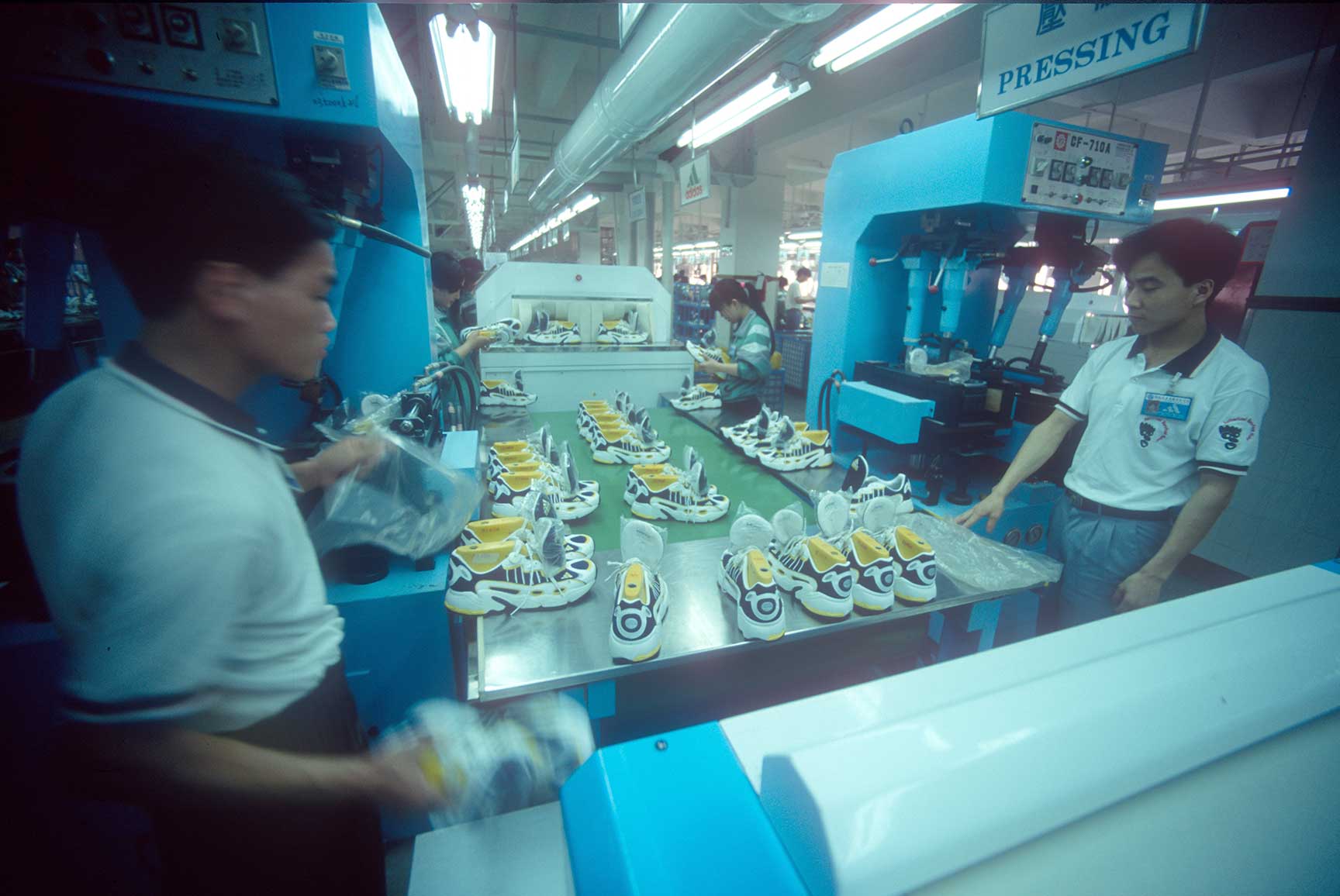
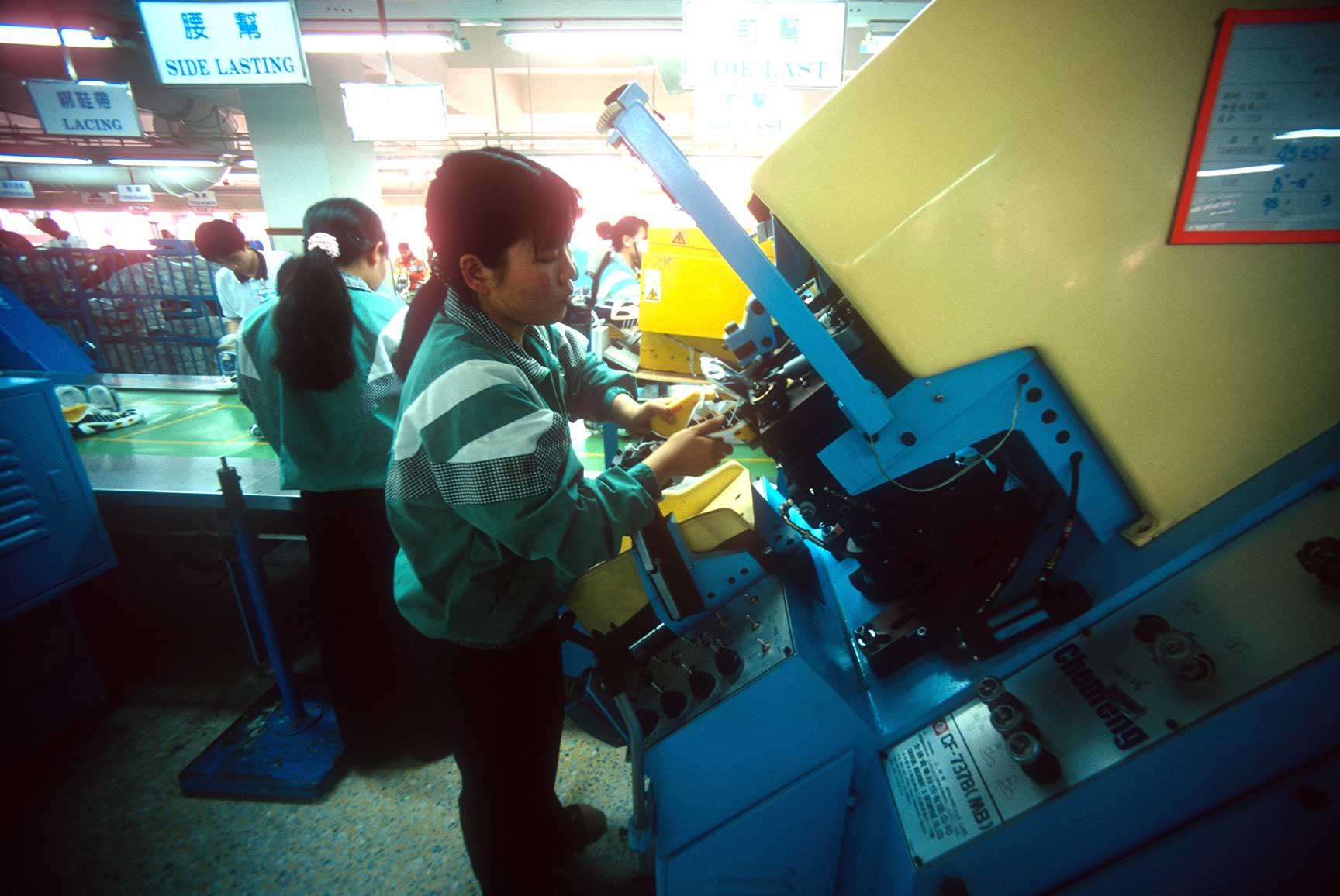
Meanwhile, legitimate companies, such as adidas, and other sports clothing manufacturers are helping to establish a growing economic base with new factories. One of my stops was at a new shoe factory in Dong Guan, halfway between Hong Kong and Guangzhou. The day was sunny and warm. Because of recent news stories about shoe shops in Asia, the word "sweatshop" did pop into my mind. However, I was the only one sweating. What I found at this new factory was several floors of young people working at various stages of shoe manufacturing: cutting, sewing, gluing, all going on in airy, ventilated rooms two blocks long and a block wide. I am old enough that everyone under 30 looks young, so I had to ask how old were these kids. The manager said all children in China must attend school until age 16, then they can go to work. That looked right, most of them less than 20 looking. The work force was mostly girls, but enough boys to keep things interesting. Not too interesting, it turns out. They are lodged in separate dorms close to the factory building, all new and clean. At night they are not allowed to go over to other dorms. But for that rule this would be a teenage boy’s paradise, about five girls to every boy, or so it seemed. This same problem faced the owners of textile factories in early New England ...keeping the girls from getting pregnant. The same sort of scandal for such an occurrence would be true of either the Communist/Buddhist/Confucian populations as it was for the Calvinists. Still, it looked like a nice place to work, given that work is necessary.
My work was going well. The factory was well-lit and the managers cooperated by letting me walk all the aisles, looking for just the right faces. There was no way I could photograph every face, there were hundreds. Some were learning new skills such as operating a punch machine, stitching shoe parts together, gluing, and cutting. Others were teaching new workers, moving the shoes along, each step getting closer to the final product. Inspection teams made sure each step was done correctly and as I lingered near the fans to cool down, I noted that no one seemed bothered by the heat. The manager said he was used to it, but even he would have a problem working further south, say in Malaysia, where it gets really hot and humid. I was glad it was only springtime.
I said good-bye and thanks to the factory managers and Paul once more drove me as fast as possible down the new freeway, back to the Turbo-Cat terminal. It was late in the afternoon by the time I got back to Hong Kong, so I looked up some old friends at their shop, had a good chat with them and then visited the Hong Kong History Museum. I was particularly interested in the section which showed life in Stanley internment camp during World War II. Stanley is on the east side of Hong Kong Island, on a small peninsula. That was where I grew up to be a four year old. The old photos didn’t ring any bells, but what did I expect? I was barely 6 months old when the Japanese forces swooped down on Hong Kong, December 9, 1941. Our family of four grew to a family of six, adding a brother and a sister to our prison nest. We lived in a 12’ x 12’ room for four years. A lot has changed in Hong Kong since then. Now, however, a 12’ x 12’ room would still be a luxury to many families, the crowding is so great, and likely to get worse. Stanley today is a maximum security prison. I could not visit. I hated to leave Hong Kong, but the film had to get home.
In eight days I passed through ten x-ray check points with the film in my carry-on camera bag. None of the film had any damage. What a chance I took? As an experiment a few years ago I took one roll with me on all my trips. After about 20 x-ray bouts I had it processed. Nothing was wrong with it. The bulletins are telling us of new, more powerful x-ray machines at certain airports. Next time hand checking of the film may be in order. All the airports that I passed through seemed friendly, so asking for hand checks would only take more time. Other airports, with machine gun armed guards standing about are more intimidating: Tel Aviv, Athens, New Delhi, Beijing. No amount of asking nicely will get a hand inspection. Hijackers have made travel restrictions more needed. Instead of raising the ante and getting tougher security at airports the governments of the world should close the gap between the haves and the have-nots and get the ruling classes in certain countries to quit mistreating the minorities and provide all citizens with a voice and a way to make a decent living. Then the world airways would be safe for those who can afford to travel. A very small part of Earth’s billions of inhabitants have flown, around the world or otherwise. I feel very fortunate.